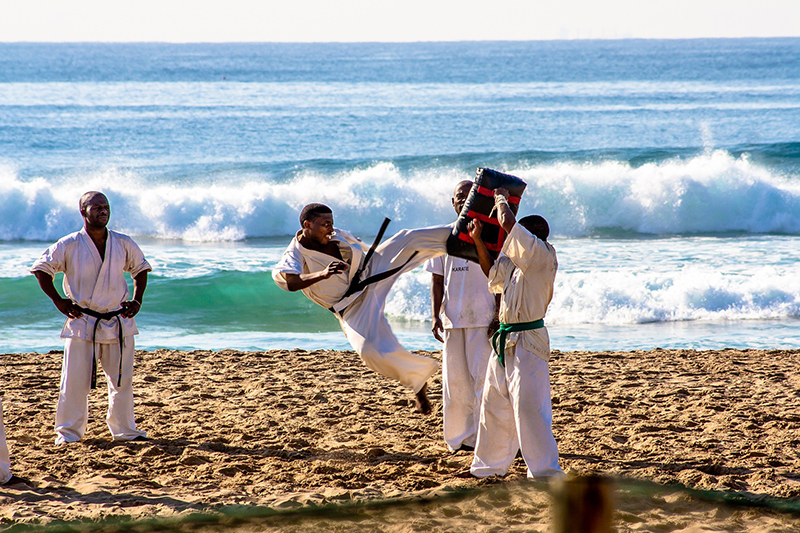 |
|
|
|
|
| General Information |
Karate is one of the most widely practised and popular martial arts originated in Okinawa, Japan. Karate translates as “the way of the empty hand” (Funakoshi 1973; Umezawa 1998). As its name indicates, Karate mainly consists of striking techniques with hands, elbows, feet, and knees. No weapons are used in general. |
| History/Development |
There is debate over the origin of Karate. Krug (2001) views that karate is a combination of fighting techniques and practices mainly from China, but including many other Asian countries like Japan, Korea, and Thailand. In contrast, Mottern (2001) believes China has the strongest link to the development of Karate citing that Karate was called Toudi or Touti. Here, Tou stands for the Tang dynasty of China and di or ti means hand in old Okinawan language. Put together, the original name of Karate can be translated into Chinese hand, suggesting its roots stem from Chinese martial arts. While recognising such Chinese influence, others still regard Toudi or Touti as indigenous Okinawan art that has evolved for a long time in the island. Although contested, it seems reasonable to accept that Karate has developed upon the “interaction and cross-pollination of combat practices in [East Asian] region” (Johnson 2012: 64). |
Transmission
(Policies/institutions) |
|
| Relevant Organisations |
|
| Additional Materials |
|
| References |
- Funakoshi, G. (1973). Karate-do kyohan. Tokyo, New York, San Francisco: Kodansha International.- Johnson, N. (2012). “The Japanization of Karate?: Placing an Intangible Cultural Practice”, Journal of Contemporary Anthropology 3(1):62-78.- Krug, G. (2001). “At the Feet of the Master: Three Stages in the Appropriation of Kinawan Karate into Anglo-American Culture”. Cultural Studies Critical Methodologies 1(4):395-410.- Mottern, R. (2001). “Karate, Okinawa”. In Martial Arts of the World. Thomas Green, ed. Pp. 363-367. Santa Barbara, CA: ABC-CLIO.- Tan, K. (2014). “Constructing A Martial Tradition: Rethinking A Popular History of Karate-Dou”. Journal of Sports & Social Issues, 28(2): 169-192.- Umezawa, R. (1998). The Empty Hand: A Karate Wordbook. New York: Weatherhill. | | |

